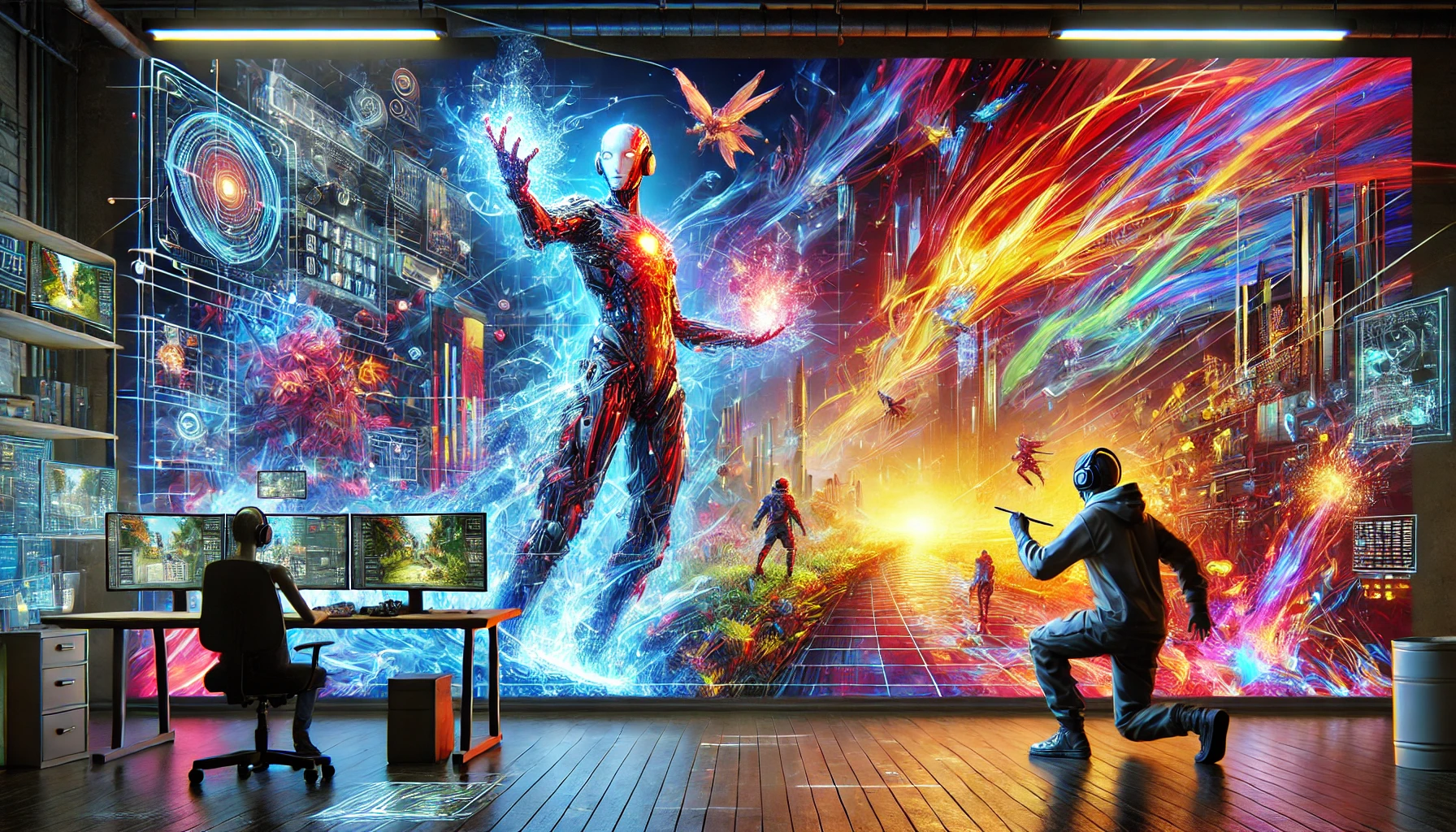Oklahoma City Police Sgt. Matt Gilmore had just spent nearly an hour chasing down a group of suspects with his trusty K-9 partner, Gunner. Normally, after the adrenaline fades, the tedious task of writing a report begins—30 to 45 minutes of typing out every detail, cross-referencing notes, and trying to remember what was said in the heat of the moment. But this time, Gilmore did something different. He let AI write the first draft.
In just eight seconds, the AI-generated report was ready. Gilmore was stunned—not only was it faster, but it was more detailed and better organized than anything he could’ve written. It even captured facts he didn’t consciously remember, like another officer’s mention of the car's color. This wasn’t just time-saving; it felt like a glimpse into the future.
AI: Revolutionizing Police Work or Opening Pandora’s Box?
Artificial intelligence (AI) has been steadily infiltrating every facet of life, but when it starts rewriting police reports, you know we're entering new territory. Oklahoma City is one of the first police departments to experiment with AI-generated reports, and while officers like Gilmore are singing its praises, not everyone is onboard with the idea. Legal scholars, prosecutors, and community activists are all voicing their concerns about the implications of AI shaping a document as critical as a police report.
Police work is still largely a human endeavor. The average officer isn’t sitting around reading about machine learning; they’re in the field, dealing with human lives, messy situations, and unpredictable behavior. Yet, behind the scenes, tech like AI is creeping in to do the parts of the job most officers hate—data entry, endless paperwork, and report-writing.
Here’s a quick look at how AI is transforming police work:
| Task | Traditional Method | AI-Assisted Method |
|---|---|---|
| Report Writing | 30-45 minutes per report | 8 seconds with AI |
| Data Entry | Manually entered | Auto-generated from audio |
| Case Summaries | Hours of note-taking | Instant generation from body cam footage |
Why AI-Generated Reports Matter
Let’s face it—no one becomes a police officer to sit behind a desk. The real pull of the job is being out in the field, solving crimes, helping the community, and keeping the streets safe. But for every minute spent in the field, there’s another minute spent writing reports. This is where Axon, the company behind the Taser and one of the biggest suppliers of body cameras, steps in with their new AI tool, Draft One.
Using the same generative AI technology as ChatGPT, Draft One listens to everything recorded on body cameras and churns out a report in seconds. It’s like having an invisible assistant who never sleeps, never misses a detail, and can write better than most officers. This is a big deal, especially for departments that are already stretched thin.
Axon’s CEO, Rick Smith, compares the reaction to Draft One as the most “positive” any of their products has received. Officers love it because it frees them up to focus on real police work, while the AI handles the paperwork.
But here’s the catch: how do you make sure the AI gets it right? And, more importantly, how do you ensure the human element of policing doesn’t get lost in translation?
The Risks: When AI Gets It Wrong
We’ve all heard the horror stories of AI hallucinations—when an AI system “embellishes” or flat-out makes up facts. Now imagine that happening in a police report. Legal scholar Andrew Ferguson from American University is already sounding the alarm. He points out that police reports often form the basis of legal proceedings. If an AI-generated report contains even a tiny mistake, it could alter the course of someone’s life. Imagine a report that “hallucinates” an extra detail, and suddenly, someone’s liberty is on the line.
For police officers, the stakes are high. The AI might be fast, but it’s not perfect. And the problem of “garbage in, garbage out” still applies—if the audio recording isn’t crystal clear or if there’s too much background noise, the AI could easily misinterpret a key fact. It’s already been an issue in places like Fort Collins, Colorado, where the AI struggles to summarize reports from the city’s bustling downtown bar district.
Ferguson isn’t the only one worried. Community activists like Aurelius Francisco are particularly skeptical. He views the use of AI in policing as just another tool that could deepen the divide between law enforcement and marginalized communities. “This makes the cop’s job easier, but it makes Black and brown people’s lives harder,” he said, warning that AI could be used to amplify biases already present in the justice system.

Key Benefits of AI in Law Enforcement
Let’s take a moment to break down the benefits AI could offer:
- Speed: AI-generated reports in seconds compared to traditional report writing.
- Accuracy: AI can pull information from multiple sources like audio recordings and radio chatter, ensuring no detail is missed.
- Efficiency: Officers can focus on what matters—being on the street, responding to emergencies—not stuck doing paperwork.
However, these benefits come with concerns about accountability and fairness.
Where Does the Responsibility Lie?
One of the biggest concerns? Who is responsible for the report. Rick Smith, Axon’s CEO, acknowledges that district attorneys are worried about officers leaning too heavily on AI. What happens when an officer is called to testify in court and admits, “The AI wrote that report, not me”? This creates a gray area where accountability could become murky.
To mitigate these concerns, the Oklahoma City police department is only using the AI tool for minor incidents—no arrests, felonies, or violent crimes. But in Lafayette, Indiana, and Fort Collins, officers can use Draft One for any case they deem appropriate, which raises more questions about oversight and accuracy.
The Bigger Picture: AI in Policing
AI has already seeped into law enforcement in ways we don’t always see. From facial recognition technology to predictive policing algorithms that “forecast” where crimes might happen, AI is changing the landscape. But as these tools become more powerful, they also become more controversial.
The debate around privacy, civil liberties, and racial bias is ongoing. We’ve already seen examples where facial recognition misidentified suspects, disproportionately affecting communities of color. Now, with AI writing police reports, the stakes feel even higher. After all, a police report isn’t just a piece of paper—it’s often the only version of events that a judge or jury will ever see.
Can We Trust AI With Justice?
It’s easy to get excited about the time-saving benefits of AI. But the reality is more complex. The same technology that helps officers save time could also be used to cut corners, make mistakes, or perpetuate biases. The risk isn’t just about what AI gets wrong—it’s also about what it doesn’t understand.
For instance, AI can analyze words and sounds, but it doesn’t have the same nuanced understanding of a situation that a human officer does. It doesn’t “see” body language, facial expressions, or unspoken dynamics that can be critical to understanding a crime scene.
And yet, police departments are pushing forward. Startups like Policereports.ai and Truleo are racing to get their AI tools into more hands, and it’s only a matter of time before AI-generated reports become the norm rather than the exception.
Illustration: AI in Law Enforcement
To better understand how AI fits into modern policing, let’s visualize the process:
Diagram Explanation:
- Incident Occurs – Body cameras capture footage and audio.
- AI Analysis – AI pulls data from the recording.
- Report Drafting – AI generates a first draft report.
- Officer Review – Human officers review and edit the AI-generated report.
- Report Finalized – The final report is filed, with AI assistance noted.
The Future of Policing: Opportunity or Risk?
As AI becomes more ingrained in law enforcement, the question isn’t whether it will change policing—it’s how. Will AI become the ultimate tool for efficiency, making officers' lives easier and allowing them to focus on what really matters? Or will it introduce new risks, new biases, and new concerns about transparency and accountability?
Call to Action: So, what do you think? Are you excited about the potential for AI to revolutionize policing, or are you worried about the risks? Drop your thoughts in the comments below.
And don’t forget to join the iNthacity community to claim your citizenship of the "Shining City on the Web", where we explore the future of tech and society together.
FAQs
1. What exactly is AI-generated police reporting?
AI-generated police reporting refers to the use of artificial intelligence to write the first drafts of police reports based on audio, video, and data collected during incidents. Think of it as having a super-efficient assistant that listens to body cam audio, processes the information, and instantly creates a report for officers. It’s like the future of paperwork—but is it too good to be true?
2. Can AI reports really be as accurate as a human-written report?
AI can process vast amounts of data faster than any human. It captures every word, sound, and piece of data from body cams, which can sometimes lead to even more detailed reports than officers might remember. But here’s where we hit a snag—AI has a tendency to “hallucinate” or embellish facts. This means while it can be shockingly fast, it could also insert details that aren’t entirely accurate. That raises the question—who should we trust more, the tech or the human officer?
3. What are the potential dangers of AI in law enforcement?
AI in law enforcement can lead to concerns over bias, privacy, and accountability. For example, AI tools used for facial recognition have already shown biases against people of color. The same worries apply to AI-generated reports—could it unintentionally perpetuate racial or systemic biases? Also, there’s a question of who’s accountable when a mistake happens. Is it the AI, the officer, or both?
4. How can AI improve police work?
AI can make police work more efficient by handling the tedious, time-consuming paperwork. Officers can focus on what really matters—protecting the community, making arrests, or conducting investigations. AI-generated reports can speed up the legal process and ensure no detail is missed, potentially making our justice system faster and more effective.
5. What about the privacy concerns with AI police tools?
AI already plays a role in predictive policing, facial recognition, and now report writing. But this means every word and action recorded by an officer’s body cam could be processed by AI. For some, this raises red flags about how our data is used and how deeply AI is involved in law enforcement. Could this erode trust in police departments and even infringe on our privacy?
6. Who is accountable if an AI-generated report is inaccurate?
This is one of the biggest concerns. If an officer testifies in court based on an AI-generated report, who takes the blame if that report is incorrect? AI might make the process more efficient, but there’s no substitute for human judgment, especially when someone’s freedom is on the line. Police officers are responsible for reviewing and approving the report, but what if they miss something?
7. Can AI reduce bias in police reporting?
AI has the potential to remove certain human biases, but it can also perpetuate them if not carefully monitored. AI is trained on existing data, which may already be biased. There’s a real risk that AI could reinforce systemic issues, such as racial profiling or discriminatory practices. This is why it’s critical to implement safeguards, oversight, and constant evaluation to make sure the technology is used fairly.
8. How does AI improve efficiency for police officers?
AI-generated reports save officers a huge amount of time. Instead of spending hours typing up what happened during an incident, officers can just let the AI listen to their body cam audio and spit out a report in seconds. This efficiency means officers can spend more time in the field, less time on paperwork, and ultimately provide faster service to the community.
9. Will AI eventually replace police officers?
AI is making policing more efficient, but it's unlikely to replace human officers anytime soon. The role of AI is to support, not replace, human intuition and judgment. AI can process data faster, analyze trends, and even help with investigations, but when it comes to dealing with people, the human touch is irreplaceable.
10. How widespread is the use of AI for police reports?
AI-generated police reports are still in the early stages, with only a handful of police departments, like Oklahoma City and Lafayette, Indiana, using tools like Axon Draft One. However, with companies like Axon and OpenAI leading the charge, expect this technology to become more common in the coming years.




















Post Comment
You must be logged in to post a comment.